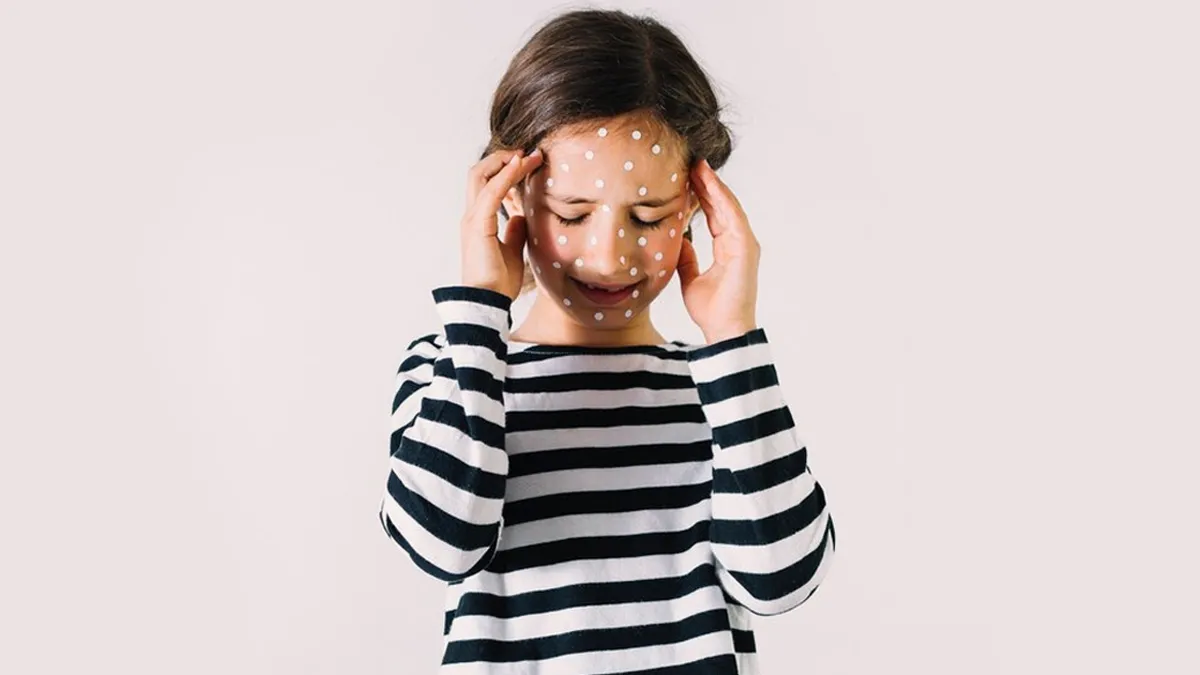
It is a typical school day. Your child comes home, complaining about the same headache they had the week before. You initially think it was due to fatigue, but when your child started avoiding bright lights and loud noises, you realised it could be something more. A visit to the doctor revealed the cause: paediatric migraine.
Table of Content:-
Paediatric migraines can affect children as young as five, and though they are common, they often go unnoticed or misdiagnosed. Recognising the signs early can help manage the condition and improve a child’s quality of life. We at OnlyMyHealth asked Dr. Anmol Shandilya, Resident Doctor, MD Paediatrics, Motilal Nehru Medical College and Hospital, Prayagraj, to share eight facts that all parents should know about paediatric migraine. Here's what he shared with us.
RELATED: Is Your Child Gulping Down Raw Milk? Paediatrician Shares 3 Major Dangers You Should Know
1. Paediatric Migraines Are More Common Than You Think
-1734692637219.jpg)
Migraines aren’t just an adult problem. By the age of 15, up to 75% of children report having significant headaches. Around 10.5% of children aged 5-15 experience migraines, and the rate rises to 28% in older adolescents. Despite these numbers, migraines in children often go untreated because symptoms may be misinterpreted or dismissed.
Additionally, Dr. Shandilya says that most paediatric headaches stem from tension, which can range from stress to long and tiring school hours. Keeping your child’s stressors in check and ensuring that any and every stressor is blocked out or regulated is essential. Parents can identify stressors by having constant conversations with their children, aimed at uncovering their daily activities.
2. There Are Two Types of Migraines: With or Without Aura
“A migraine can occur with aura (sensory disturbances like seeing flashes of light, hearing buzzing sounds, or experiencing unusual smells) or without aura. Aura symptoms can act as a warning sign before a headache begins, while migraines without aura may appear suddenly—it manifests without aura in 60-85% of children and adolescents who get migraines and with aura in 15-30% of children. Recognising these patterns helps parents and doctors manage migraines more effectively”, says Dr. Shandilya.
3. Common Triggers Include Lifestyle and Routine Factors That Parents Rarely Suspect
According to Dr. Shandilya, several lifestyle factors can trigger paediatric migraines, including:
- Skipping meals
- Irregular or insufficient sleep
- Dehydration
- Long school hours and stress
- Sudden weather changes
Simple adjustments, like maintaining regular mealtimes and ensuring proper sleep, can help reduce migraine frequency.
4. Family History Plays An Essential Role
Migraines often run in families. If a parent has migraines, their child is more likely to experience them. Knowing your family history can help you stay alert to early symptoms in your child and seek timely medical advice. You can also raise these concerns with your doctor and collaboratively take suggestions and adhere to them to ensure prevention.
5. Prolonged Use of Smartphones Can Induce Migraines
Prolonged use of smartphones, tablets, or computers can strain a child’s eyes and neck, triggering migraines. Encourage regular breaks, ensure good posture, and reduce screen time, especially before bed, to minimise the risk of migraines.
RELATED: Why Your Child Complains of Leg Pain at Night and When to Worry, Know All About Growing Pains
6. Frequent Headaches Shouldn’t Be Ignored
-1734692655197.jpg)
Recurring headaches in children are a sign that shouldn’t be overlooked. If your child frequently complains of headaches or experiences symptoms like nausea, light sensitivity, or dizziness, consult a paediatrician. Early diagnosis can prevent migraines from becoming chronic and affecting school performance or daily activities.
Children's migraines often affect both sides of the head, but adult migraines are more likely to be one-sided. Furthermore, migraine attacks in children are frequently shorter than those in adults.
7. Migraines Can Impact School and Daily Life
Dr Shandilya says that childhood migraines, on the other hand, can be debilitating, forcing youngsters to miss school, sports, and other extracurricular activities. Paediatric migraines can be intense enough to interfere with school and social activities. Severe attacks may cause children to miss classes or struggle to concentrate, such that they can cause a child to get bedridden. Identifying and managing migraines early helps minimise their impact on academic performance and overall well-being.
8. The SMART Technique Helps Manage Migraines
“The SMART technique is a simple way to manage and prevent migraines through healthy habits,” says Dr. Shandilya.
S – Sleep: Ensure your child gets enough sleep every night.
M – Meals: Provide regular, balanced meals and keep them hydrated.
A – Activity: Encourage regular physical activity.
R – Relaxation: Teach stress-reducing techniques like deep breathing.
T – Trigger Avoidance: Identify and avoid known triggers like screen overuse or skipping meals.
Takeaway for Parents
Paediatric migraines are more common than many realise, but they can be managed with the right knowledge and approach. By understanding the signs, triggers, and prevention techniques, you can help your child cope better and enjoy a healthier, happier life. If headaches persist, don’t hesitate to consult a healthcare professional for guidance.
Also watch this video
Read Next
Is Your Child’s Backpack Too Heavy? Risk Of Scoliosis, Signs And Solutions For Better Posture
How we keep this article up to date:
We work with experts and keep a close eye on the latest in health and wellness. Whenever there is a new research or helpful information, we update our articles with accurate and useful advice.
Current Version